I have spent much of this week in a jelly-making frenzy. We had this large bucket of quince left over from the annual quince harvest, you see, and it needed to be made into jelly. Or something.
So now I will give you a guided tour through the first stages of jelly-making.
First, you wash the fluff off your quinces. Then chop the quinces into quarters and remove the stems and blossom-ends (the butt of the quince, as it were). You leave in the core and seeds, and the skin, because those have the pectin in them, and of all things you should not be adding pectin to quince.
You put the fruit in a large pot and just cover them with water. This picture shows too many darned quince in the pot; I had to get another pot out and shift some quince over. This was about fifteen pounds of quinces, maybe more; the scale couldn't go that high.
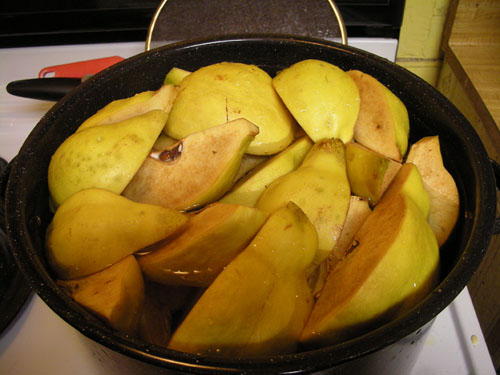
Don't worry too much about how much water you have in there, but don't over-do it. All that water will need to be boiled out in the end.
I boil the quince until they are soft enough that I can stick a wooden spoon through the fruit and break it in half. With our quince, this is a couple of hours.
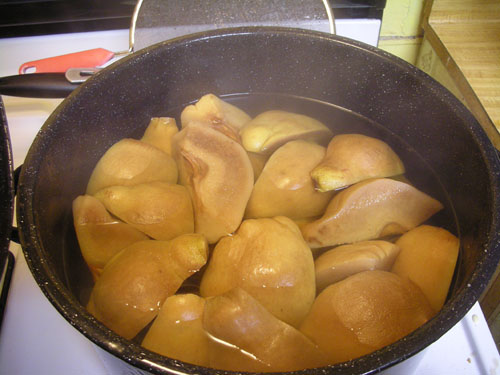
Then I process the water and fruit through a chinois:
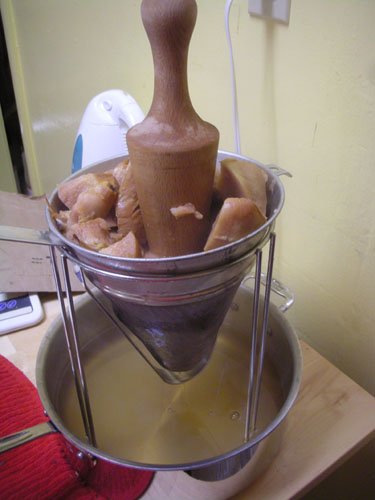
This gives me a nice juice, which I can filter.
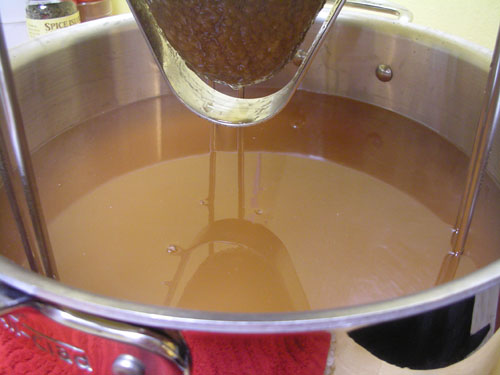
And pulp, which I could process through a food mill to turn into a nice compote with spices, but instead I just compost because there's only so much quince I can handle.
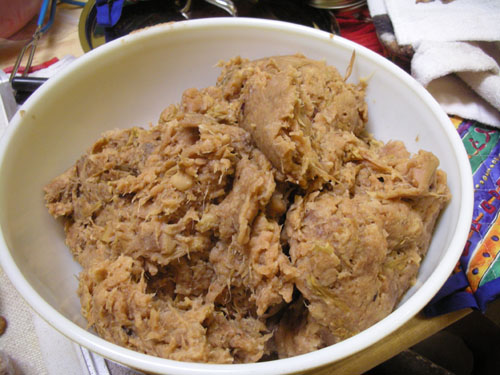
The juice I filter through a muslin sack.
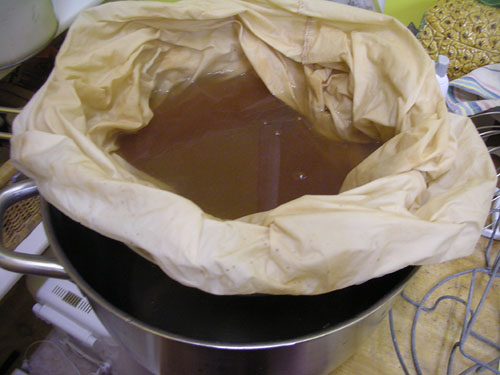
I hang the sack over a pot (with a collander there to catch it if it falls), and let it drip overnight. This works with varying success, and sometimes I have to pour the juice out and filter it in a jelly bag (which is a tight mesh but less tight than muslin).
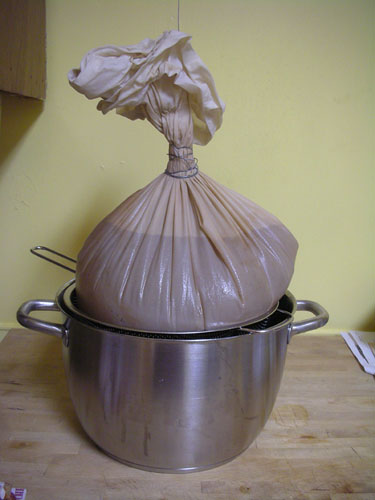
Goldie likes this part.
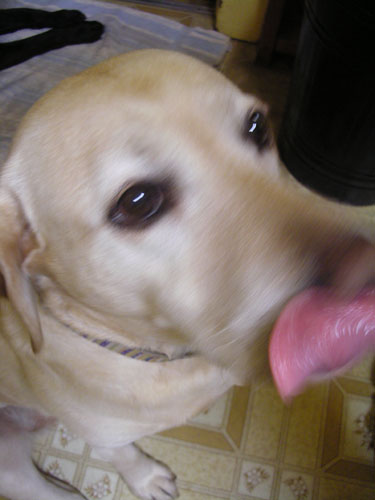
The long part comes next. I take that juice and measure it out, putting equal volumes of juice and sugar in a pot. I add a bunch of lemon juice to activate the pectin, and then I boil.
It starts out this lovely golden colour, but it will end up red, so you must boil it until it is red. The best way to ensure a good set is to learn to do the spoon test, and the best way to do that is to take pretty much ever spoon you own and put them in the freezer.
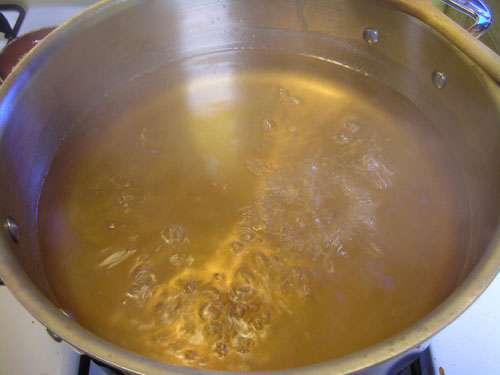
So here are some videos showing the juice at various stages. With a less watery juice, you would progress through these stages somewhat faster than I did with this quince juice (which took up to two hours to boil down enough to jell).
Here's juice that really clearly is not going to pass the spoon test:
And this juice is ready; you can see the deep red colour, and the spoon test shows the jelly clumping up pretty quickly:
As with many worthwhile things, jelly making is part art, part science.
So we ended up with more than 24 half-pint jars of quince jelly, and I still have a pitcher with eight more cups of juice waiting to be turned into jelly (it turns into jelly at about one cup of jelly per cup of juice before adding the sugar and lemon). I've run out of jars. I think maybe we will not make quince jelly for a few years after this.
